According to the definition of the National Aeronautics and Space Administration (NASA), a black hole is a region of space in the universe where matter becomes so dense that its gravity will not let anything escape, including light.
Time is said to stop almost at the edge of a Black Hole, and its center may hide a point of infinitely small volume and infinite density where all the laws of physics break down.
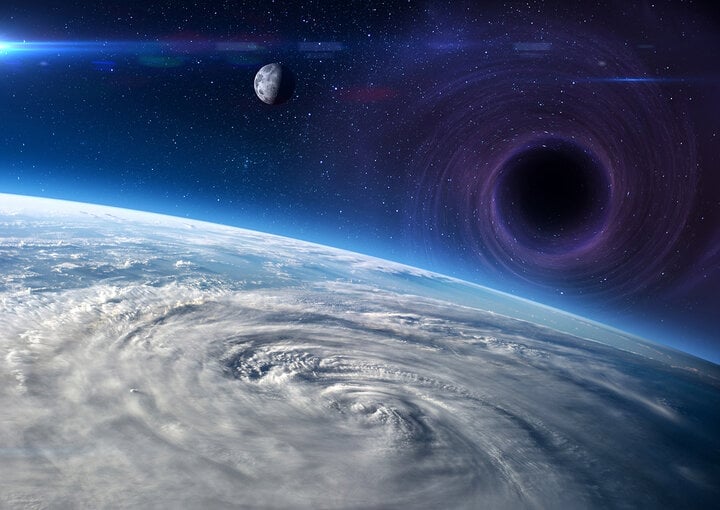
The chances of the Earth being swallowed by a Black Hole are extremely low unless a transiting Black Hole appears within the Solar System.
The possibility of the Earth being swallowed by a black hole
Possessing the terrible power to devour anything unfortunate enough to enter the space they exist and travel through. It is no surprise that these cosmic objects have been the subject of science fiction since the definition of Black Holes was introduced by scientists in 1964.
Despite the fact that black holes are dangerous objects, there is no reason to fear that the Earth or the entire Solar System will be swallowed by a supermassive black hole. The possibility of the Earth being swallowed by a single black hole is also extremely unlikely.
According to scientists, this comes from the distance between Black Holes being almost the same as Earth, and on the other hand, the gravitational force of a Black Hole cannot swallow a star with the same mass as it.
If we replaced the Sun with a Black Hole of the same mass, the Earth and the remaining planets would continue to orbit the Black Hole as they do now. There would be no noticeable change in the gravitational pull exerted on the planets in the Solar System.
However, if our Sun were replaced by a Black Hole, our Solar System would become dark and cold.
The only way Earth could be swallowed by a Black Hole is if our planet happened to wander across the event horizon of a wandering Black Hole.
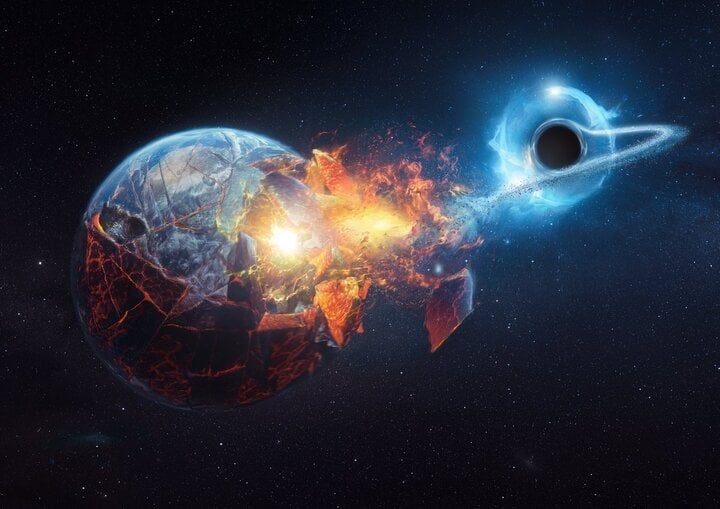
Depending on the size of the Black Hole, matter on Earth could be stretched out into spaghetti-like shapes.
What happens when the Earth falls into a black hole?
In a scenario where the Earth is swallowed by a black hole, what happens next would be catastrophic, says Gaurav Khanna, a black hole physicist at the University of Rhode Island.
"As the Earth gets closer to a black hole, time slows down. And depending on the size of the black hole, matter can be stretched out into spaghetti-like shapes," Khanna said.
Even if the planet survives this "spaghetti" process, Earth will be bound to a small, dense singularity where it will be consumed by the pressure and temperature of an immeasurable gravitational pull.
We can therefore rule out the possibility that a Black Hole swallowed the Earth at some point in its history. In other words, our planet would be wiped out in an instant.
However, there is another scenario where the Earth will survive being swallowed by a black hole.
“A black hole looks a lot like a reverse Big Bang. While a black hole collapses into a very small, dense point, the Big Bang also exploded from such a point,” Khanna analyzed.
One theory suggests that the first Big Bang was a singularity of a black hole in a larger parent universe. The center of the object became so dense that it was compressed and compressed, “until somehow it exploded and a baby universe was formed inside the black hole.”
This theory, known as Schwarzschild cosmology, also suggests that our universe is currently expanding inside a black hole that is part of the "parent universe".
This leads to another hypothesis that Earth could exist inside a Black Hole after our planet is swallowed.
Dr. Samir Mathur, Ohio University (USA), said that black holes do not destroy everything they suck in. They even create a “virtual image” of the object and continue to exist.
The Earth could exist on a virtual surface inside a Black Hole. This interesting hypothesis suggests that a Black Hole is like a replicator of the universe where this object has a different surface.
Things don't just get sucked into the depths of the Black Hole, they fall to some surface. Look at anti-counterfeit stamps, which have a sunken surface.
If this were the case, the Earth would probably be safely located on a surface inside another space. However, this surface would have to have all the necessary conditions to describe a 3D object.
Tra Khanh (Source: BBC)
Source



![[Photo] National Assembly Chairman Tran Thanh Man chairs the meeting of the Subcommittee on Documents of the First National Assembly Party Congress](https://vphoto.vietnam.vn/thumb/1200x675/vietnam/resource/IMAGE/2025/5/8/72b19a73d94a4affab411fd8c87f4f8d)

![[Photo] General Secretary concludes visit to Azerbaijan, departs for visit to Russian Federation](https://vphoto.vietnam.vn/thumb/1200x675/vietnam/resource/IMAGE/2025/5/8/7a135ad280314b66917ad278ce0e26fa)
![[Photo] President Luong Cuong presents the decision to appoint Deputy Head of the Office of the President](https://vphoto.vietnam.vn/thumb/1200x675/vietnam/resource/IMAGE/2025/5/8/501f8ee192f3476ab9f7579c57b423ad)






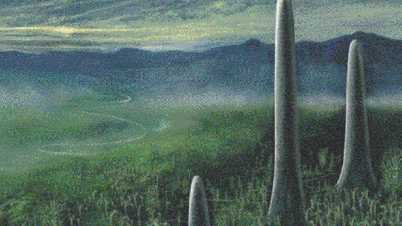
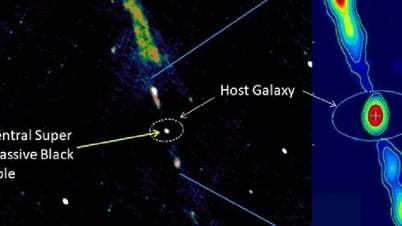






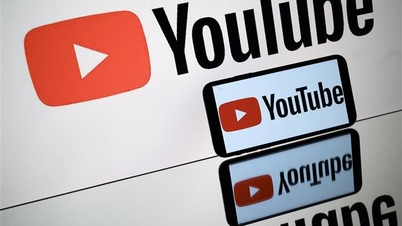










![[Photo] General Secretary To Lam receives leaders of typical Azerbaijani businesses](https://vphoto.vietnam.vn/thumb/1200x675/vietnam/resource/IMAGE/2025/5/8/998af6f177a044b4be0bfbc4858c7fd9)
































![[Photo] Prime Minister Pham Minh Chinh talks on the phone with Singaporean Prime Minister Lawrence Wong](https://vphoto.vietnam.vn/thumb/402x226/vietnam/resource/IMAGE/2025/5/8/e2eab082d9bc4fc4a360b28fa0ab94de)













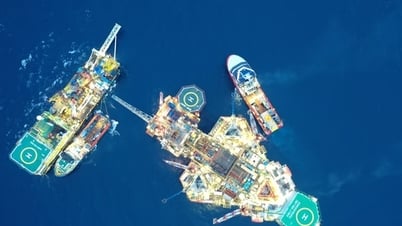



















Comment (0)